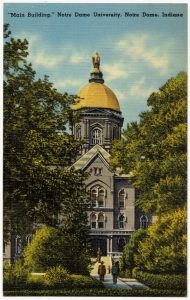Clients often contact us with questions concerning copyright issues. One common copyright question clients come to us with concerns the images can they use without violating copyright law. Can they use any image they find online with impunity?
In short, no. Therefore, in order to avoid copyright issues you should only use images that you have secured a license to or have taken from the public domain. Taking images from the public domain is an attractive option for several reasons.
You can use images taken from the public domain, for free, without any restrictions. If you are using an image from the public domain, you do not have to worry about any copyright issues.
What is the Public Domain?
In copyright, the “public domain” refers to a collection of creative works that are not protected by law. You can think of the public domain as the public park of creative works. Everyone is free to use the park, but no one who uses the park owns it.

The public domain is the driving force behind copyright (as well as patent) law. The government incentivizes individuals to produce and publish creative works by providing legal protections to the producer. These legal protections expire after a certain amount of time.
Importantly, the government provides the legal protection incentive in order to benefit the public at large. After the legal protections expire, the creative work is dedicated to the public domain, free for the public to use as they see fit.
Anyone is free to use a creative work that is in the public domain for any purpose without the author’s permission. Additionally, you can use works in the public domain without paying a fee or paying for a license to use the creative work.
What is in the Public Domain?
Works enter the public domain in the three following ways: (1) if the copyright has expired or has not been renewed, (2) if copyright law does not protect the work, and (3) if the work has been dedicated to the public.
First, a creative work enters the public domain if the copyright on the work has expired or if the copyright owner has failed to renew the copyright. You can search the status of a registered copyright through the United States Copyright Office. The statutory rules about the duration of copyright protection are complicated; however, generally all works published in the United States before 1923 are in the public domain. Additionally, works published after 1977 are protected for the lifetime of the creator plus 70 years.

Second, a creative work enters the public domain upon creation if copyright law (and no other kind of intellectual property law) protects the creative work. For example, copyright law does not protect United States government works. You are free to use government press releases and federal statutes as you see fit.
Here, it is important to note that a work not protected by copyright law may be protected by a different kind of intellectual property law. To learn more about the different types of intellectual property law, see additional posts on the LoTempio law blog.
Finally, creative works enter the public domain if the creator “dedicates” the work to the public domain. The owner of a creative work is free to decide that he or she no longer wants the legal protections of a copyright. The owner can essentially gift the creative work to the public domain for the benefit of the public at large.
What is not the in the Public Domain?
The public domain does not consist of all creative works that are publicly accessible. Frequently, individuals think that because a creative work is freely available and accessible online that the creative work is in the public domain and may be used without restriction. Accessibility is unrelated to a creative work’s status as protected or unprotected by copyright law.
Most creative works found online are not in the public domain. Copyright law (and possibly other forms of intellectual property law) protects these works. Before using a creative work found online, you must either secure a license for the work or make sure that the work is in the public domain or risk copyright infringement.
Where can I find Images that are in the Public Domain?
Thankfully there are several places online where you can find images that are in the public domain. You can use these images without worrying about any potential copyright infringement. However, before using any of the images listed on any of the sources below you should double-check that images are actually in the public domain. The websites do not guarantee that the hosted images are actually in the public domain.
Below is a list of 12 websites where you can find images in the public domain. Additionally, Wikipedia maintains a continually updated list of where to find public domain images here.
- Flickr Commons (Flickr’s collection of public domain images)
- Wikimedia Commons (scroll down to the bottom of the page to see the Wikimedia images)
- Public Domain Archive (stock photos in the public domain)
- New York Public Library Public Domain Digital Collection
- Old Book Illustrations (illustrations taken from books that are in the public domain)
- Unsplash (free photos donated by photographers)
- ISO Republic (free stock photos)
- Startup Stock Photos (stock photos of people working in start up environments)
- Pixabay (royalty free stock photos)
- Pixnio (high quality public domain images)
- Public Domain Vectors (vector images in the public domain)
- Pexel (high quality public domain images)
- Pikwizard.com (free stock photo website- a lot of pictures of people)
If you’ve enjoyed this blog post, we have lots more where this came from, including an Inventors Guide Video Series where we help you turn your good idea into a profitable invention, and tons of other great content. Simply enter your email address and hit sign up and you’ll get everything, including blog posts like these, conveniently in your email box!
Have any questions? Give us a call at 1-800-866-0039. Consultations are FREE.
Please also check out this video about copyright registration!









